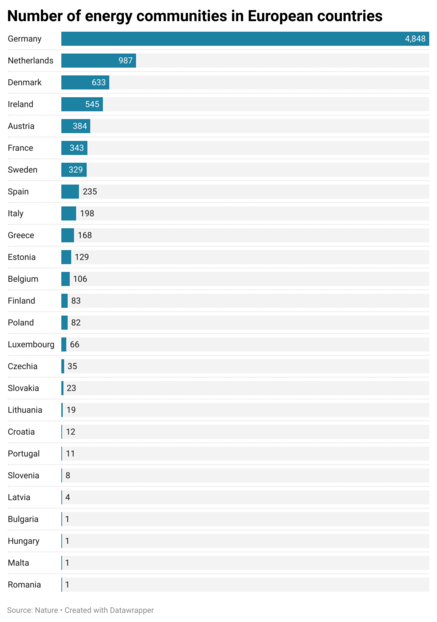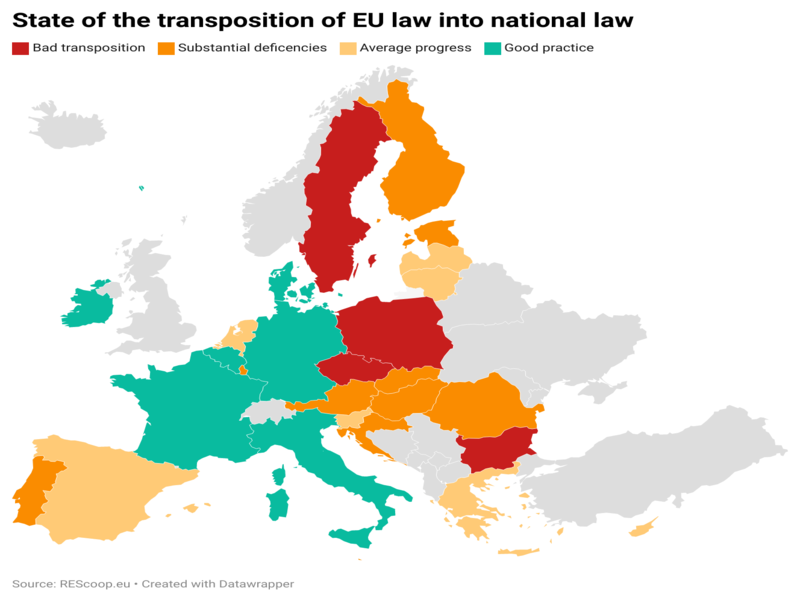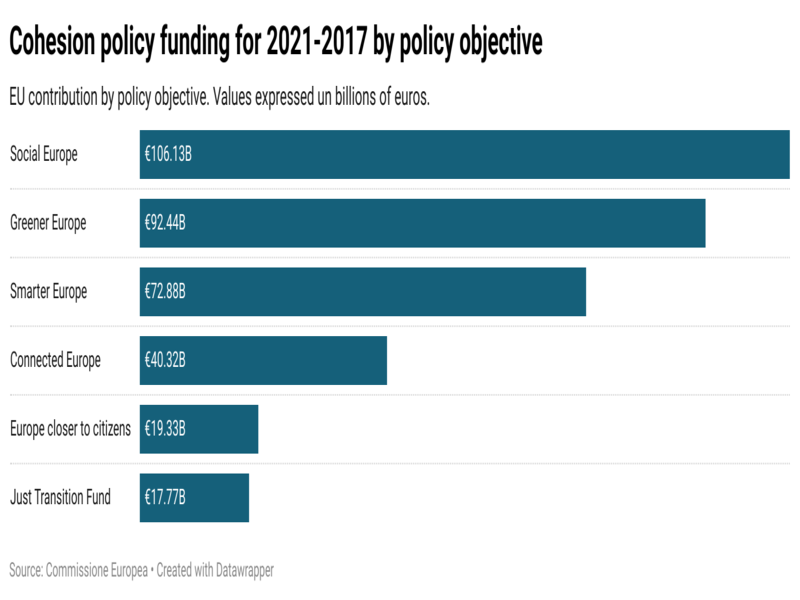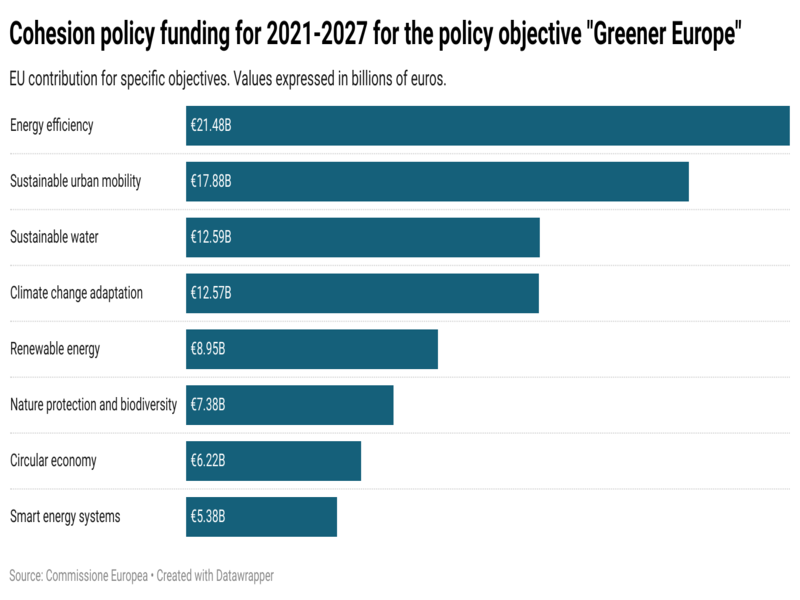Europe and energy communities
Energy communities are projects in which citizens associate both as producers and consumers of clean energy at a local level. There are already many of them, including in South-Eastern Europe. They could be supported by EU cohesion policy, but that is not the case yet
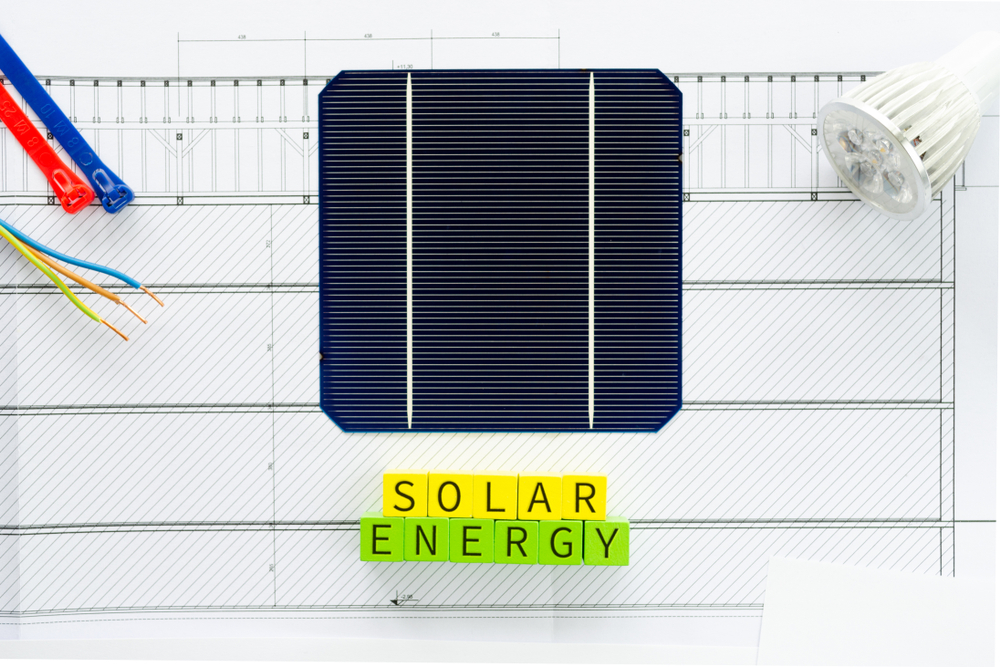
L-Europa-delle-comunita-energetiche
@ kLukec/Shutterstock
Energy communities are emerging as a key element in achieving EU energy transition goals. Indeed, according to the European Commission , by 2050, half of European citizens could produce half of the EU’s renewable energy.
These communities are based on the concept of local energy self-consumption and allow to generate electricity through renewable sources by promoting energy efficiency, ensuring that local communities are not only self-sufficient in terms of energy supply, but also significantly reducing the environmental impact.
Energy communities in European legislation
Although the concept of energy communities is not new, in recent years it has gained importance thanks to the legal status obtained with the European legislative package Clean Energy for all Europeans .
This package includes, among others, the directive for the internal electricity market and the renewable energy directive . These directives have regulated two new concepts of energy communities: citizens’ energy communities, which serve to ensure a level playing field for new players on the electricity markets, and renewable energy communities, which qualify as useful tools for achieving the European objectives set on the quantity of energy produced from renewable sources.
A recent study published in the scientific journal Nature mapped energy communities in 29 European countries, 26 of which are EU member states.
In the EU countries there are 9252 energy communities, although we can see large disparities between the member countries: more than half of these are found in Germany, which has 4848 energy communities, followed by other states of the Union, while Bulgaria, Malta, Romania, and Hungary have just one.
These communities can be established as legal entities, in the form of cooperatives, social enterprises, associations, or other types of non-profit legal entities, allowing individuals to collaborate with local authorities and small and medium-sized enterprises to orchestrate joint investments in energy goods and for participation in the energy markets.
With these directives, the EU has laid the legal foundations for a paradigm shift towards energy prosumerism, with local communities of citizens acting both as producers and consumers of low-carbon energy, effectively democratising the energy market . Both types of energy communities pursue social and territorial inclusion and, regardless of their location, aim to include low-income families and the most vulnerable groups.
However, there are several obstacles that can slow down or prevent the diffusion and growth of energy communities, both of a legislative and financial nature.
Legislative hurdles: the transposition of directives into national law
The legislative problems that can hinder the establishment of energy communities are to be traced in the first instance to the failure, partial, or incorrect transposition of the European directives into the national law of the member states. This can discourage the creation of energy communities, due to administrative obstacles, or by creating a situation whereby private actors appropriate these initiatives, defeating the initial intention of being citizen-centred.
REScoop.eu , the European federation of citizens’ energy cooperatives, constantly monitors national legislation and evaluates the transposition of European law by member states in the field of energy communities.
According to the monitoring of REScoop.eu, continuously updated and which photographs the situation up to December 2022, there are only six European countries that have good practices in the transposition of the directives: Belgium, Denmark, France, Germany, Ireland, and Italy.
Other member states, despite having transposed the directives, present some critical elements. In Spain, for example, the type of legal entities that can form energy communities has not been concretely delimited and, since there is no regulatory authority with supervisory power, abuses of the legislation could occur, undermining citizens’ trust in this type of initiative. Something like this seems to have already happened in Greece where, due to a transposition of EU law which gives broad interpretation to how these communities may be formed, many energy communities have been created by private investors rather than citizens.
There are also cases, such as that of Romania, in which the European directives have been transposed with little clarity, creating a situation in which the lack of precise procedures and criteria makes it difficult to create energy communities with legal certainty.
Finally, some states have yet to enact laws on energy communities, with borderline cases such as those of Bulgaria and Czechia where there is not even a bill yet.
Financial barriers: what role for cohesion policy?
It is not easy to be able to obtain funding to develop energy communities, both because this kind of projects has only recently been regulated and their intrinsically different nature from other initiatives in the sector. This means that banks and other financial operators still have no experience with projects of this kind, a situation that could prevent investments.
According to an analysis by CEE Bankwatch Network based on 8 EU countries, member states could support energy community projects thanks to cohesion policy funds. There are already good examples such as Slovakia and Hungary which mention energy communities in three operational programmes and in the national operational programme, respectively. Among the other states considered in the study, some mention energy communities but incompletely, others seem not to have included them in their plans.
It is still too early to draw any conclusion, but there are many resources that could be used for energy communities. For the 2021-2027 programming period, one of the five main objectives of EU policies is to have a "greener Europe" and, in particular, over 92 billion Euros out of the approximately 350 total in European funding will be allocated to this line of public policies.
More specifically, the goal of having a greener Europe is pursued through several specific targets, including investments to finance greater energy efficiency, renewable energies, and smart energy systems, which together amount to almost 39 billion Euros. These funds could be used by states and authorities to invest in the creation of energy communities, supporting their development.
Furthermore, the Interreg territorial cooperation programmes could also encourage the creation of cross-border energy communities.
However, the possibility of effectively accessing these funds depends both on having a clear legal framework of the energy communities at national level and on the willingness of the EU fund management authorities to include these projects in their programming.
If these conditions are realised, the many resources made available by the cohesion policy could bring local communities of citizens to the centre of policies of the utmost importance such as energy ones, supporting the sustainable self-production of electricity through renewable sources and at the same time helping the EU to break free from fossil fuels – and from the set of political and geopolitical problems that their supply entails.
This content is published in the context of the “Work4Future” project co-financed by the European Union (EU). The EU is in no way responsible for the information or views expressed within the framework of the project. The responsibility for the contents lies solely with OBC Transeuropa. Go to the “Work4Future“
Tag: Work for Future
Featured articles
- Take part in the survey
Europe and energy communities
Energy communities are projects in which citizens associate both as producers and consumers of clean energy at a local level. There are already many of them, including in South-Eastern Europe. They could be supported by EU cohesion policy, but that is not the case yet

L-Europa-delle-comunita-energetiche
@ kLukec/Shutterstock
Energy communities are emerging as a key element in achieving EU energy transition goals. Indeed, according to the European Commission , by 2050, half of European citizens could produce half of the EU’s renewable energy.
These communities are based on the concept of local energy self-consumption and allow to generate electricity through renewable sources by promoting energy efficiency, ensuring that local communities are not only self-sufficient in terms of energy supply, but also significantly reducing the environmental impact.
Energy communities in European legislation
Although the concept of energy communities is not new, in recent years it has gained importance thanks to the legal status obtained with the European legislative package Clean Energy for all Europeans .
This package includes, among others, the directive for the internal electricity market and the renewable energy directive . These directives have regulated two new concepts of energy communities: citizens’ energy communities, which serve to ensure a level playing field for new players on the electricity markets, and renewable energy communities, which qualify as useful tools for achieving the European objectives set on the quantity of energy produced from renewable sources.
A recent study published in the scientific journal Nature mapped energy communities in 29 European countries, 26 of which are EU member states.
In the EU countries there are 9252 energy communities, although we can see large disparities between the member countries: more than half of these are found in Germany, which has 4848 energy communities, followed by other states of the Union, while Bulgaria, Malta, Romania, and Hungary have just one.
These communities can be established as legal entities, in the form of cooperatives, social enterprises, associations, or other types of non-profit legal entities, allowing individuals to collaborate with local authorities and small and medium-sized enterprises to orchestrate joint investments in energy goods and for participation in the energy markets.
With these directives, the EU has laid the legal foundations for a paradigm shift towards energy prosumerism, with local communities of citizens acting both as producers and consumers of low-carbon energy, effectively democratising the energy market . Both types of energy communities pursue social and territorial inclusion and, regardless of their location, aim to include low-income families and the most vulnerable groups.
However, there are several obstacles that can slow down or prevent the diffusion and growth of energy communities, both of a legislative and financial nature.
Legislative hurdles: the transposition of directives into national law
The legislative problems that can hinder the establishment of energy communities are to be traced in the first instance to the failure, partial, or incorrect transposition of the European directives into the national law of the member states. This can discourage the creation of energy communities, due to administrative obstacles, or by creating a situation whereby private actors appropriate these initiatives, defeating the initial intention of being citizen-centred.
REScoop.eu , the European federation of citizens’ energy cooperatives, constantly monitors national legislation and evaluates the transposition of European law by member states in the field of energy communities.
According to the monitoring of REScoop.eu, continuously updated and which photographs the situation up to December 2022, there are only six European countries that have good practices in the transposition of the directives: Belgium, Denmark, France, Germany, Ireland, and Italy.
Other member states, despite having transposed the directives, present some critical elements. In Spain, for example, the type of legal entities that can form energy communities has not been concretely delimited and, since there is no regulatory authority with supervisory power, abuses of the legislation could occur, undermining citizens’ trust in this type of initiative. Something like this seems to have already happened in Greece where, due to a transposition of EU law which gives broad interpretation to how these communities may be formed, many energy communities have been created by private investors rather than citizens.
There are also cases, such as that of Romania, in which the European directives have been transposed with little clarity, creating a situation in which the lack of precise procedures and criteria makes it difficult to create energy communities with legal certainty.
Finally, some states have yet to enact laws on energy communities, with borderline cases such as those of Bulgaria and Czechia where there is not even a bill yet.
Financial barriers: what role for cohesion policy?
It is not easy to be able to obtain funding to develop energy communities, both because this kind of projects has only recently been regulated and their intrinsically different nature from other initiatives in the sector. This means that banks and other financial operators still have no experience with projects of this kind, a situation that could prevent investments.
According to an analysis by CEE Bankwatch Network based on 8 EU countries, member states could support energy community projects thanks to cohesion policy funds. There are already good examples such as Slovakia and Hungary which mention energy communities in three operational programmes and in the national operational programme, respectively. Among the other states considered in the study, some mention energy communities but incompletely, others seem not to have included them in their plans.
It is still too early to draw any conclusion, but there are many resources that could be used for energy communities. For the 2021-2027 programming period, one of the five main objectives of EU policies is to have a "greener Europe" and, in particular, over 92 billion Euros out of the approximately 350 total in European funding will be allocated to this line of public policies.
More specifically, the goal of having a greener Europe is pursued through several specific targets, including investments to finance greater energy efficiency, renewable energies, and smart energy systems, which together amount to almost 39 billion Euros. These funds could be used by states and authorities to invest in the creation of energy communities, supporting their development.
Furthermore, the Interreg territorial cooperation programmes could also encourage the creation of cross-border energy communities.
However, the possibility of effectively accessing these funds depends both on having a clear legal framework of the energy communities at national level and on the willingness of the EU fund management authorities to include these projects in their programming.
If these conditions are realised, the many resources made available by the cohesion policy could bring local communities of citizens to the centre of policies of the utmost importance such as energy ones, supporting the sustainable self-production of electricity through renewable sources and at the same time helping the EU to break free from fossil fuels – and from the set of political and geopolitical problems that their supply entails.
This content is published in the context of the “Work4Future” project co-financed by the European Union (EU). The EU is in no way responsible for the information or views expressed within the framework of the project. The responsibility for the contents lies solely with OBC Transeuropa. Go to the “Work4Future“
Tag: Work for Future

